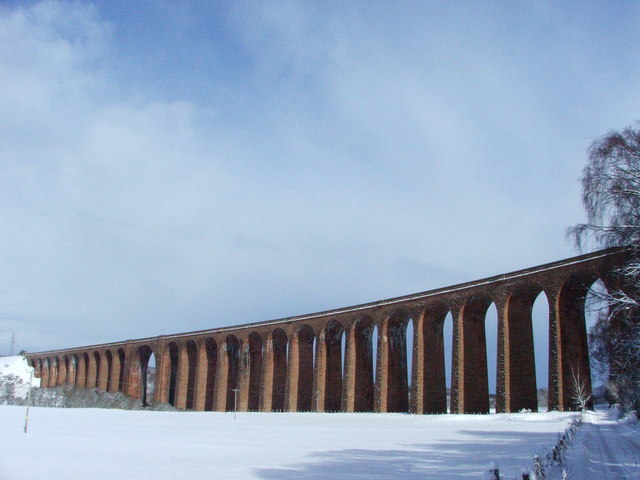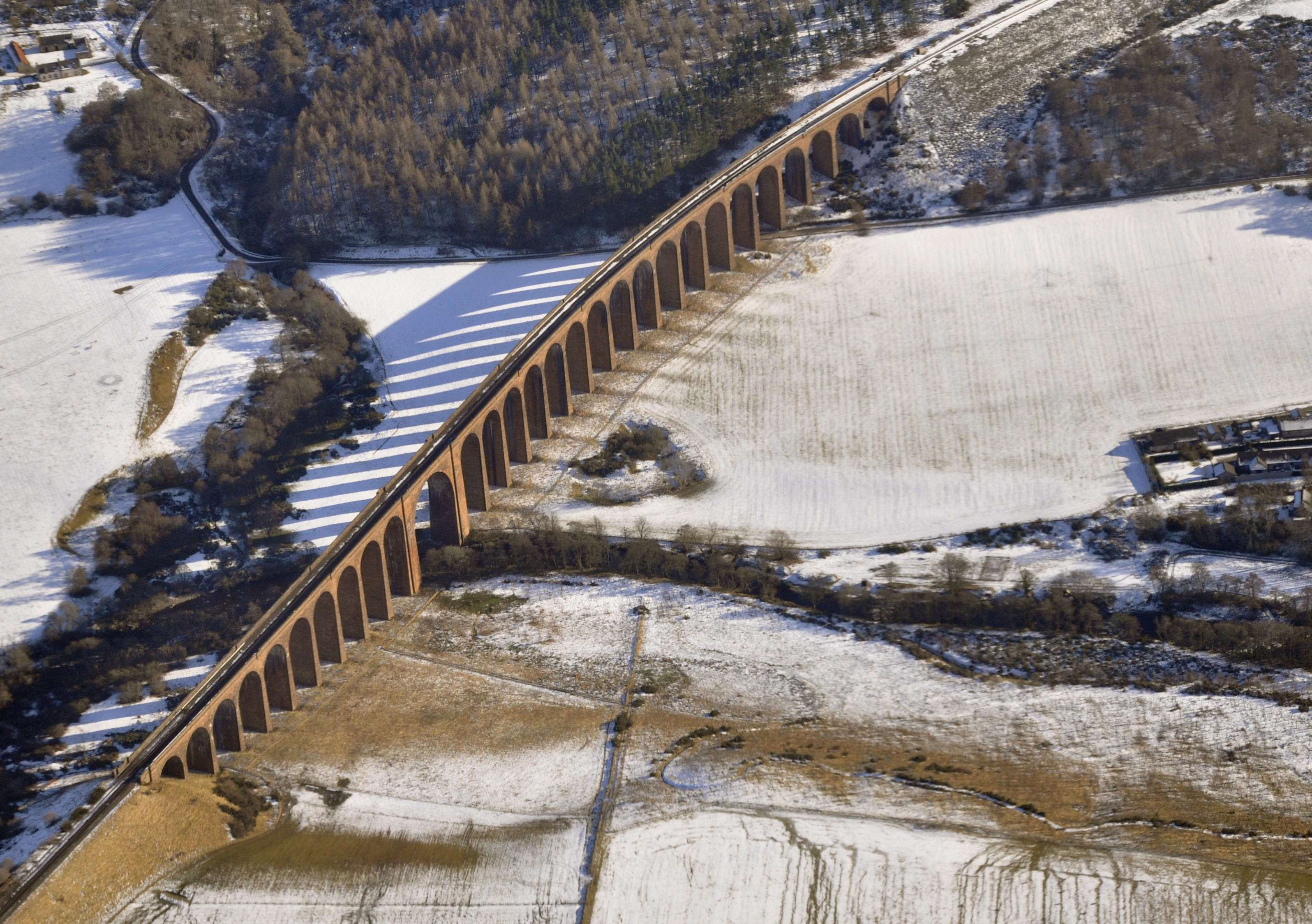Culloden Viaduct on:
[Wikipedia]
[Google]
[Amazon]
 The Culloden Viaduct is a railway viaduct on the
The Culloden Viaduct is a railway viaduct on the  It was designed by
It was designed by
 The Culloden Viaduct is a railway viaduct on the
The Culloden Viaduct is a railway viaduct on the Highland Main Line
The Highland Main Line is a railway line in Scotland. It is long and runs through the Scottish Highlands linking a series of small towns and villages with Perth at one end and Inverness at the other. Today, services between Inverness and Edi ...
, to the east of the city of Inverness
Inverness (; from the gd, Inbhir Nis , meaning "Mouth of the River Ness"; sco, Innerness) is a city in the Scottish Highlands. It is the administrative centre for The Highland Council and is regarded as the capital of the Highlands. Histori ...
, in the Highland
Highlands or uplands are areas of high elevation such as a mountainous region, elevated mountainous plateau or high hills. Generally speaking, upland (or uplands) refers to ranges of hills, typically from up to while highland (or highlands) is ...
council area of Scotland.
 It was designed by
It was designed by Murdoch Paterson
Murdoch Paterson (September 1826 – 9 August 1898) was an engineer and architect based in Inverness, Scotland, who was chief engineer of the Highland Railway
The Highland Railway (HR) was one of the smaller British railways before the R ...
and opened in 1898 as part of the Inverness and Aviemore Direct Railway, which was built by the Highland Railway
The Highland Railway (HR) was one of the smaller United Kingdom, British railways before the Railways Act 1921, operating north of Perth railway station, Scotland, Perth railway station in Scotland and serving the farthest north of Britain. Base ...
. The 29 span viaduct crosses the wide valley of the River Nairn
The River Nairn ( gd, Narann / Abhainn Narann) is a 35 mile long river in the Scottish Highlands.
Etymology
The hydronym ''Nairn'' is Pictish in origin. The name may involve ''*Naverna'', of which the ultimate genesis is the Celtic root ''*(s) ...
. At 1800 ft (549 m) in length, it is the longest masonry viaduct in Scotland.
Historic Scotland added the viaduct to its "Category A listed building" protected status on October 5, 1971. It is nearby two important sites: Culloden battlefield
The Battle of Culloden (; gd, Blàr Chùil Lodair) was the final confrontation of the Jacobite rising of 1745. On 16 April 1746, the Jacobite army of Charles Edward Stuart was decisively defeated by a British government force under Prince Wi ...
and the Clava cairn
The Clava cairn is a type of Bronze Age circular chamber tomb cairn, named after the group of three cairns at Balnuaran of Clava, to the east of Inverness in Scotland. There are about 50 cairns of this type in an area round about Inverness. They ...
, a trio of Bronze Age burial cairns.
Culloden Moor railway station was situated at the northern end of the viaduct, but the station was closed in the 1960s. The viaduct remains in use as of 2022.
Terminology
It is known also as the Nairn Viaduct, the Culloden Moor Viaduct or the Clava Viaduct.See also
*Clava cairns of Aviemore
There are three Clava cairns in or near the Scottish Highland town of Aviemore. All three were described by Caleb George Cash, an honorary fellow of the Royal Scottish Geographical Society, in 1906.
Delfour stone circle
The stone circle is 4 mil ...
References
Bridges completed in 1898 Railway bridges in Scotland Category A listed buildings in Highland (council area) Bridges in Highland (council area) Listed bridges in Scotland Viaducts in Scotland 1898 establishments in Scotland {{UK-bridge-struct-stub